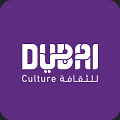Discover Our Heritage

Discover Our Heritage
Dubai and the UAE boast a rich historical and cultural legacy that merges the past with the present, reflecting the values, customs, and traditions of the local community, as well as its deep passion for arts and culture. The elegance of traditional handicrafts highlights the beauty of this heritage as it captures the authenticity of the traditional way of life that once flourished in Dubai, evolving gracefully over time.

Traditional handicrafts reflect the beauty of heritage and the simplicity of Dubai’s evolving traditional life.

Archeological Sites

Al Ashoush Archaeological Site (3rd Millennium BC)
The site was discovered in 2002 and dates back to the late third millennium BC and is considered one of the first evidence of the spread of population settlements in desert areas far from the shore of the Arabian Gulf. Many hearths and large quantities of animal bones were found during the excavations at the site. Also, different kinds of artifacts were discovered including stone and pottery, in addition to other artifacts dating back to the Neolithic period, including arrowheads, cores and blades made of flint stone.

Al Qusais Archaeological Site (2500-550 BC)
The site was discovered in 1974 and includes a large settlement containing a cemetery that includes about 120 individual burials along with several communal tombs. The site dates to the Bronze Age (Wadi Souq era - the second millennium BC) and the Iron Age (the first millennium BC). Different artifacts were found inside the graves including bronze, stone and pottery objects. And jewelry like beads, bracelets, anklets, rings and earrings.

Al-Sufouh Archaeological Site (2500-2000 B.C.)
The site was discovered in 1988 and is located a kilometer from the shore of the Arabian Gulf. The site includes remains of a settlement dating back to the third millennium BC. During archaeological excavations at the site between 1994-1995, 3 burial pits were discovered dating back to the "um an-Nar period” (2600-2000 BC). The site also contains a circular burial tomb 6.5 meters in diameter and was built according to the style of the um al-Nar civilization. The tomb has a burial chamber divided into two main parts, each of which contains 3 burial rooms, each of which has an independent entrance. Many artifacts were revealed including pottery and stone pots, bronze daggers, stone beads, and amulets of lapis lazuli and shells.

Hatta Archaeological Site 300-2500 B.C.
The archaeological survey conducted at Jabel Al- Yamh site in Hatta revealed 84 graves spread below the mountainside. These graves, which were built from stone blocks, are characterized by their own architectural style of Hafit, um al-Nar, Wadi Souq and Iron Age periods. Many artifacts were found inside them, including remains of pottery and soft stone vessels, decorated shells, bronze rings and different kinds of stone beads. Also, remains of human skeletons were found inside the graves. The study of the bone proved to date back to early Islamic times, which confirms the reuse of burials during that era.

Jumeirah Archaeological Site (900-1800 AD)
The site was discovered in 1969. It includes remains of an ancient Islamic city that reflects the prosperity of Islamic civilization during the Abbasid era (tenth century). Jumeirah retained its position until the late Islamic times (seventeenth century - eighteenth century AD). One of the most important artifacts discovered At the site, is a group of glazed pottery, stone tools, ornaments, gold and copper jewelry and silver coins. The site contains a group of monuments, , which indicate the importance of the site during the Islamic Era, especially in the Abbasid period. Jumeirah archaeological site includes 9 ancient buildings, five of which are residential, in addition to the khan, the market and the mosque, which is one of the oldest mosques discovered in UAE.

Margham Archaeological Site (1300-600 BC)
The site was discovered in 2023 and contains an archaeological tomb that, in its architectural design, resembles tombs from the Hafit period (3200-2500 BC). The tomb includes a burial chamber that is 1.60 meters long and 0.96 meters wide, inside which a skeleton was found lying down and surrounded by several funerary gifts or artifacts. Among these were a soapstone bowl, some raw pieces of flint, a small bronze cup, and 10 bronze arrowheads.

Saruq Al Hadid Archaeological Site (550-2600 B.C.)
Discovered by His Highness Sheikh Mohammed bin Rashid Al Maktoum in 2002. Saruq Al Hadid is considered one of the richest archaeological sites in the southeastern part of the Arabian Peninsula and is believed to have been one of the main centers of metal smelting during the Iron Age. The excavations at the site, revealed many artifacts, including bronze, pottery and stone vessels, various weapons such as daggers, swords, axes, bronze and iron arrows, as well as gold jewelry, bronze ornaments, beads, seals and metal models of snakes.
Our Traditions

Boat building
Dhows were the primary means of communication between the coastal communities spread across the Arabian Gulf, the Red Sea and the Indian Ocean as they helped to further openness between cultures and interaction between civilizations. Known to people of the Arabian Gulf as mahml, from the Arabic root hamal meaning ‘bearer’, the foreign word dhow now commonly refers to the wooden sailing ship powered by quadrilateral settee and triangular lateen sails that was the product of the wider Indian Ocean environment, culture and economy. The Gulf dhows have been used throughout history until the mid-20th century. As recorded in Arabic illuminated manuscripts of the 13th century or in writings of Arab travelers such as Ibn Battuta and Bin Majid in the 14th and 15th centuries, dhows evolved as seagoing shops over time. Dubai builders constructed their vessels from planks, in various sizes and shapes depending on the purpose of use. Some were used for fishing, others for pearling, especially in the 19th and early 20th centuries, and some were used in maritime trade.

Falconry
For centuries, falcons provided tribes with resources for subsistence through hunting. Today, falconry is part of the Emirates rich cultural legacy, not only as a tradition closely related to its past but also as one of its most famous national symbols.
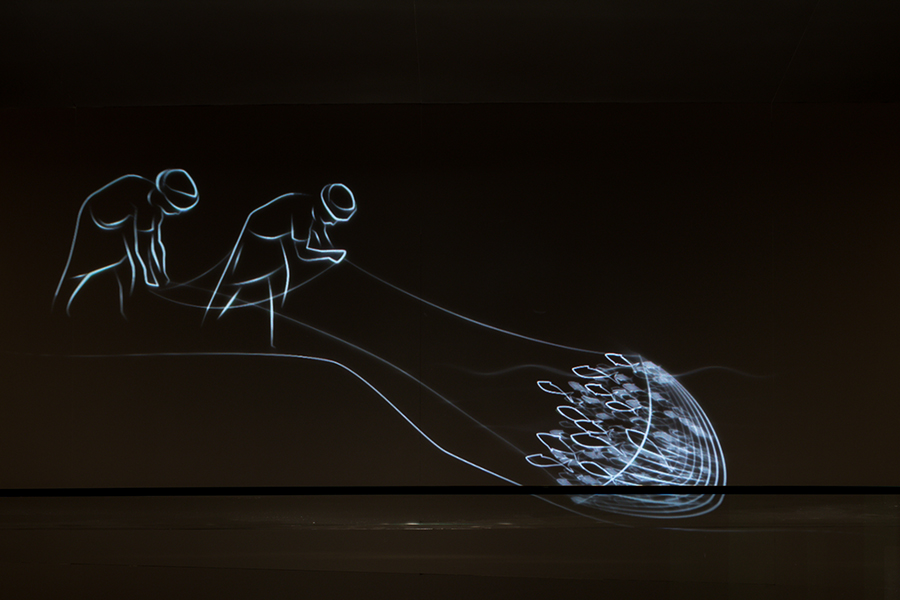
Fishing
Fishing has been one of the main food sources for the inhabitants of coastal communities in the Arabian Gulf for no less than 7,000 years, and even if the tool have changed, successive generations of fishermen in Dubai continue to use the same types of fishing techniques. Fish is an essential part of the diet of the people of the region, as well as a tradition dating back hundreds of years.
The increase in the population of Dubai during the 19th and early 20th centuries prompted a greater demand for fish. As a result, fishing was characterized as one of the important economic activities of the coastal communities distinguished by cooperation and mutual respect between the members of these communities. Fishermen maintained the same traditional techniques, and since fish was dried, salted and exported to neighbouring areas fishing became one of the main contributors to the prosperity of the Dubai economy.

Jewellery making
Jewellery was worn in the region for millennia, and not just as embellishment, it revealed a person’s wealth, social stature, taste and identity.
For centuries, Dubai’s historic trade routes and its exposure to different cultures have influenced the materials, designs, styles and shapes of traditional jewellery throughout time. Raw materials from around the world were crafted into the most exquisite jewellery. Most precious of them all, were gold jewellery, with gold sourced from India, Europe and the Americas.

Pearling
Pearls are among the oldest and most valuable natural precious gems in the jewelry industry. They owe their abundance in the gulf region to the unique waters and seabed. Treasured since antiquity, they are still widely regarded as the world’s finest. Pearls have been harvested from the Gulf for at least 8,000 years and the industry remained essentially unchanged until the mid-20th century, shaping the region’s cultural identity and historical. One of the means for gaining a livelihood according to the limited resources at the time, pearling relied on the unparalleled maritime knowledge of the nokhadas (captains) in identifying pearl bed, the skill and endurance of divers, and the collective work of the ship’s crew. Pearling transformed the Gulf’s economy between the late 18th century and the industry’s decline in the 1930’s. However, pearls remain a symbol of the region’s ancestral heritage and a testament to its past.
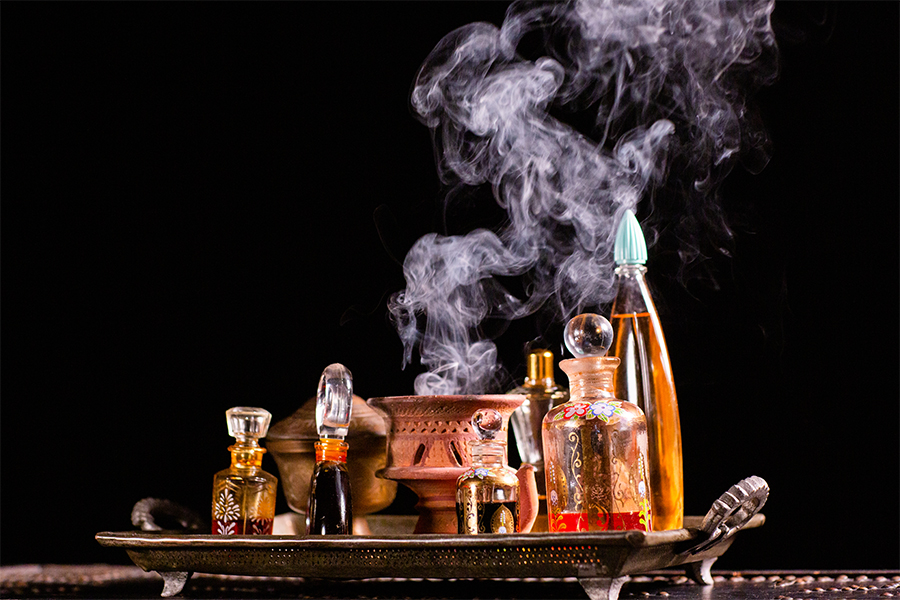
Perfumery
The art of making, wearing, and using perfume in Emirati Culture has been handed down verbally, through practice, and in poetry. Perfume has been delicately woven into the fabric of Emirati culture over time and contributes to some of their most significant hospitality rituals. It is deeply rooted in the values of Islam and of times long past when weary travelers, invited into a home to seek shelter from the elements, were welcomed by a familiar scent. Today, perfume has become the beautiful scent of generosity and mutual respect. It is an essential symbol that indicates different rituals during social gatherings. Every Emirati home welcomes guests with an aroma deeply rooted in the past, one that is meant to linger in memory.

Pottery
Pottery is one of the oldest and most prestigious traditional crafts in the UAE, with a history dating back to the third millennium (3,000-2,000) BC. It was practiced as part of the daily life of the community, where pottery was used for various purposes, such as storing water and food, cooking, and serving meals. Pottery items and tools of different shapes and sizes were handcrafted using traditional techniques, relying on natural clay, reflecting the skills of the Emirati citizen in transforming raw materials into artistic pieces distinguished by their beauty and elegance. Over time, pottery in Dubai and the UAE evolved to include more complex designs and intricate details while preserving the traditional methods passed down through generations. In recent years, this craft has gained widespread attention in Dubai, with the opening of many studios and workshops that train enthusiasts in pottery-making techniques. Dubai Culture, through the Al Jalila Cultural Centre for Children, has also focused on teaching children and adults the basics of pottery and its arts, as well as how to use clay to mold creative shapes and models.

Traditional medicine
During the first half of the 20th century, before the arrival of modern medicine, the people of south-east Arabia were reliant on herbalists, known as Attareen for plant remedies and traditional healers, known as Mutabbib, for treating physical ailments. Through their ingenuity and resourcefulness, the people of Dubai discovered natural treatments to ailments, infections, and diseases in coastal, mountainous and desert regions. These discoveries enabled communities to survive and remain healthy. This wisdom is passed down in the form of stories, sayings, songs and proverbs. Written texts, including medical manuals and collections of poetry, also provide valuable insights into the history of medicine.
Traditional Food

Aseeda
Wheat that is cooked to a perfect texture with sugar and water. When simple tastes great!

Balaleet
Craving salty and sweet for breakfast? This dish has it all! A sweet vermicelli topped with a classic plain omelet. The perfect combination.

Chebab
Simply, pancakes with an Emirati twist. Usually comes with cheese and honey on a side. A fun choice for all ages!

Fogah (Machboos)
Machboos is one of the most famous main dishes on the Emirati table and is a popular dish prepared with either meat, chicken, or seafood (such as fish and shrimp). It is characterised by the unique flavor of Arabic spices and the addition of distinctive mixed vegetables. Machboos is a main meal that reflects the depth of local culinary traditions and heritage. It is associated with hospitality and generosity in the Emirati culture, often served during official events, holidays, and feasts. The dish reflects the expertise of Emirati women in preparing traditional dishes.


Khameer
Khameer literally means yeast, so imagine how fluffy and yummy this bread is. You can have it plain, with dips, topped with Zaatar or even stuffed with cheese.

Luqaimat
Imagine fried doughnuts but better. Those bites of heaven are usually best served warm and topped with date syrup and sesame seed.

Mathrooba
Named after its meaning, Mathrooba is literally beaten rice with chicken and flavorful middle eastern spices. It takes a lot of time, patience and strength to cook, but it is well worth it!
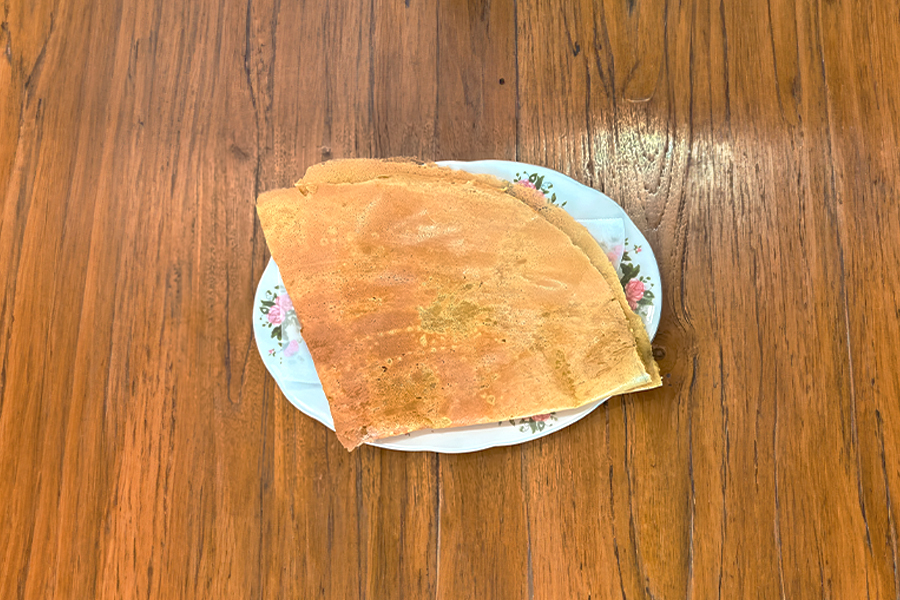
Mohalla
Khobz Mohalla holds within it the flavours of the past, reflecting the community's deep connection to its original traditions and culture. It is one of the most prominent traditional local dishes, known for its rich taste and soft texture, and symbolises Emirati hospitality and generosity. It is served during social occasions and holidays and is made from simple, readily available ingredients such as flour, saffron, cardamom, and water. The preparation involves mixing flour with water and salt, then adding saffron and cardamom for a distinctive flavour. The mixture is left aside for some time to ferment slightly, then poured into a hot pan in thin circles resembling pancakes. It is cooked over medium heat until golden on both sides and is usually served with honey or date syrup. The dish can be enjoyed as a breakfast meal or a light snack throughout the day.
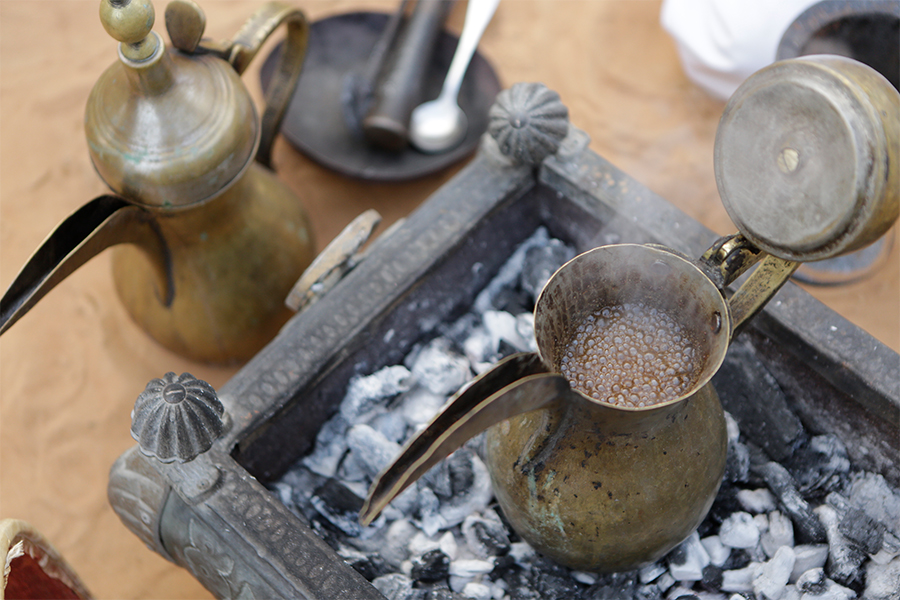
Qahwa
Welcoming the guest with qahwa (coffee) is considered one of the most important traditions of hospitality in the Arab world in general, and Emirati society in particular. Made from freshly roasted coffee beans that are grounded and blended with gnad (special mix of spices), qahwa symbolizes the traditions of generosity and hospitality deeply rooted in Emirati culture. The United Arab Emirates has their own recipe of coffee which makes it unique, due to its ingredients and composition distinguishing it from coffee served in other Arab countries.

Regag
If it is not thin or crunchy, it’s not a Regag! This type of bread takes a couple of minutes to perfect but requires so much technique and accuracy. It can be as light or as heavy as you wish by having it plain or with eggs, cheese and gee oil.
Traditional Handicrafts

Al Khoos
Crafting using palm fronds, or safafa, is one of the UAE’s original handicrafts, especially in areas where palm trees are abundant. Many household necessities, furniture and agricultural tools, as well as means to store and transport dates, are produced with this craft. Adding to the aesthetic versatility of palm products, wicker can be carved, braided and dyed with natural dyes, available in bright and beautiful colours.

Burqa Sewing
The burqa in the UAE is a unique feature that adds an element of beauty to the faces and dresses of Emirati women. Its bluish-violet colour characterises it, and it has a slight lustre. The burqa is considered one of the oldest associated cloth items of Gulf women and was even closely attached to their dresses as a reflection of their modesty before they got married.

Dukhoon-Making
The smell of incense and perfumes has long been prevalent in the Emirati heritage. Perfumes are essential for Emirati women in their daily lives and on special occasions. Women have always been interested in all kinds of perfume, which includes many popular aromatic mixtures, such as the dukhoon, the oud, the mukhmaria, and many others that accompany women on their various occasions, such as weddings and holidays.

Garagir Handcrafts
A dome-shaped , cage -like trap, gargoor (plural garagir) was used in fishing all year around. They were left on the seabed for between three to five days during winter, when fish are more abundant, and for anything up to three weeks in summer. Gargoor traps were traditionally built by specialist trap makers using locally sourced palm fronds, nowadays they are made of imported metal wire, maintaining the same shapes and sizes. They ranged from 0.60 to 3 meters in height, depending on the type of fish that was being caught and the depth of the water in which they were thrown.

Silversmithing
Silversmithing is one of the important crafts for which the UAE in general, and Dubai, in particular, was famous for in the past. Silver jewellery is distinguished by the precision and beauty of its decoration. It is represented through bracelets, necklaces and anklets, as well as earrings, all of which are made of silver or silver set with precious stones that are added in a free or geometric formation inspired by the surrounding environment.

Talli
This women’s craft is widespread in the UAE. The Talli is a ribbon decorated with intertwining white, red or silver threads. The ‘kojoja’ is used in the work of the talli, which is the main tool used for embroidery, consisting of a metal base in the form of two funnels attached to the head, with two rings on one of the bases to install a circular cushion on which gold and silver threads are wrapped to carry out the embroidery process.
Traditional Performances

Al ‘Ayyalah
A popular and expressive cultural performance practiced throughout the UAE. It involves chanted poetry, drum music and movement, imitating a battle scene. Two rows of twenty men or more face each other, carrying thin bamboo sticks to signify spears or swords. Between the rows, performers play large and small drums, tambourines and brass cymbals. The rows of men move their heads and sticks synchronously with the drum rhythm and chant poetic lyrics, while other performers move around the rows holding swords or guns, which they occasionally hurl to the sky and catch. The melody is comprised of multiple tones in an irregular repeated pattern, and the chanted poetry varies according to the occasion. Al’ayyalah is performed during weddings and other festive occasions in the UAE. Performer is usually an inherited role and is responsible for training other performers.
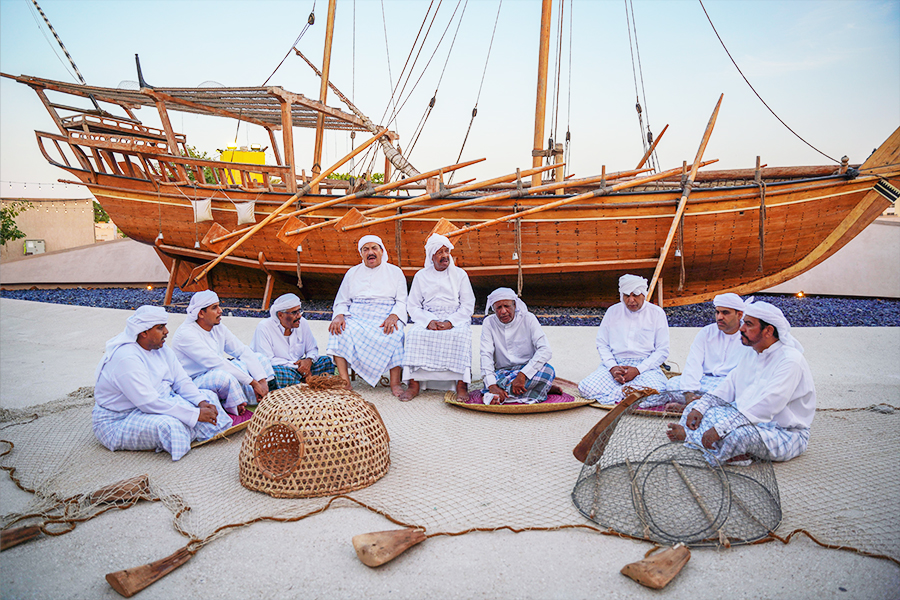
Al Nahmah
Al Nahmah is sung poetry performed by pearl divers. Verses were led by the singer on the pearling vessel, called “Al Nahham”, to motivate and entertain sailors and encourage activity during the long stretches at sea. Verses about love, patience and fate provide insight into the lives of sailors during these difficult journeys.

Al Rababah
Is a stringed instrument that is played with a bow. It has been an important musical instrument in the region as well as the wider Middle East. Al Rababah has a single string and often accompanies poetry recitation. The bow is made of horse hair and wood, covered in leather. It can play different scales, depending of the melody used.

Al Razfah
One of the most popular art forms in the United Arab Emirates it celebrates courage and community cohesion. Traditionally performed late in the evening, participants wear traditional dress and use bamboo sticks and rifles in stylized, rhythmic movement. The lyrics to the poems are performed in the local Emirati dialect without instruments and differ slightly based on the environment. Al Razfah is typically performed to greet important guests, government officials, and during marriage ceremonies.

Al Yowla
Al Yowla is the most famous dance in the Emirates, performed on most occasions, and attracts the young generation of Emiratis. It was derived from ayyala dance, which stands for courage, strength and equestrian skills, as the performers exhibit their skills in controlling the Yawla weapon with deftness and agility. The dance is often performed at weddings, events and popular festivals and the dancer is called Yawil. It is performed by young men holding a weapon over their head, or in front of them, and rotating it. It is performed alone, as a duo, or as a group of four using a stick (or weapon) in the arena of the Ayyala or Harbiyya dance.
